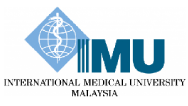Chinese Medicine External Therapy Combined with Conventional Drug Treatment for Rheumatoid Arthritis: A Systematic Review and Meta-analysis
Authors: Sin Wei Tang, Zhi Hang Wong, Ket Li Ho, Dahlya Qasryna Binti Zulkifli, Jia Wen Koo, Yung Chein Yong.
ABSTRACT
Introduction: Chinese medicine (CM) external therapy is commonly used to treat rheumatoid arthritis (RA) in combination with conventional drug. This study aims to provide a comprehensive synthesis on the efficacy of CM external therapy combined with conventional drug treatment in RA.
Methods: Randomised controlled trials (RCTs) experimenting the efficacy of CM external therapy (acupuncture, moxibustion and CM fumigation) combined with conventional drug in comparison with conventional drug only in RA patients were collected from PubMed, Medline, Cochrane Central of Controlled Trials (CENTRAL), ClinicalTrials.gov, China National Knowledge Infrastructure (CNKI), and Wanfang databases. Quality was assessed using the Cochrane Risk of Bias Tool. The outcome measures which include Disease Activity Score-28 (DAS28), Visual Analogue Scale (VAS), Swollen Joint Count (SJC), Tumour Necrosis Factor (TNF-α), serum levels of C-reactive Protein (CRP) and Erythrocyte Sedimentation Rate (ESR) were analysed using Review Manager 5.4.1 and GRADEpro GDT online software.
Results: Fifty RCTs fulfilling the criteria were included. Although some level of efficacy was statistically noted on the use of CM external therapies, their certainty levels are mixed, ranging only in between moderate and low.
Conclusions: Mixed levels of certainty has hindered the drawing of conclusion. The addition of CM external therapies to conventional drug treatment may provide some benefits in RA. Further clinical trials with considerations in minimising the risk of bias are recommended to provide more high-quality evidence in the effect of CM external therapies as a complementary treatment in RA.
Keywords: Chinese medicine, fumigation, meta-analysis, moxibustion, rheumatoid arthritis, systematic review
Citations: IeJSME 2024 Vol 18 (1): 40-65

